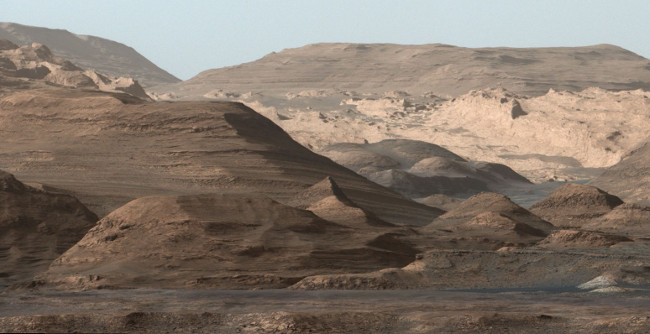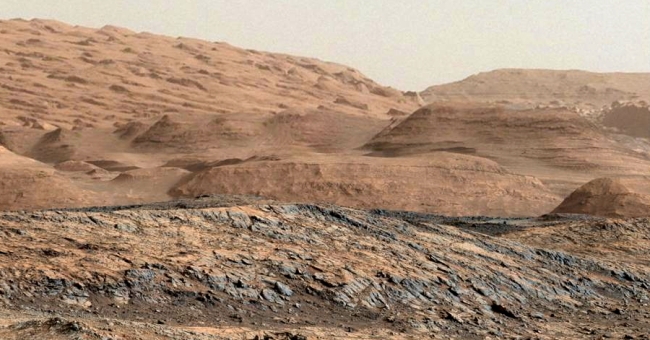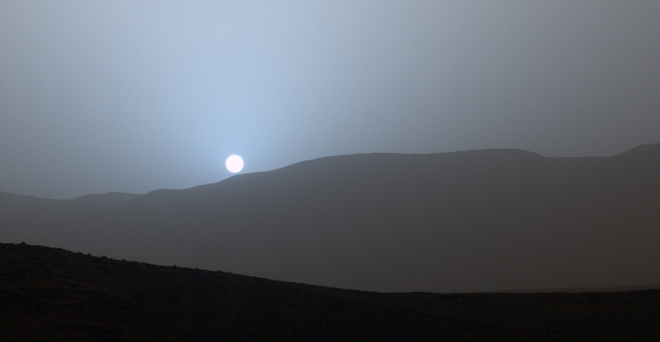Curiosity heads for the dunes

The Curiosity science team has decided to send the rover towards some large active dunes, visible in its journey ahead up Mt. Sharp.
On its way to higher layers of the mountain where it is investigating how Mars’ environment changed billions of years ago, NASA’s Curiosity Mars rover will take advantage of a chance to study some modern Martian activity at mobile sand dunes.
In the next few days, the rover will get its first close-up look at these dark dunes, called the “Bagnold Dunes,” which skirt the northwestern flank of Mount Sharp. No Mars rover has previously visited a sand dune, as opposed to smaller sand ripples or drifts. One dune Curiosity will investigate is as tall as a two-story building and as broad as a football field. The Bagnold Dunes are active: Images from orbit indicate some of them are migrating as much as about 3 feet (1 meter) per Earth year. No active dunes have been visited anywhere in the solar system besides Earth.
In the image on the right the target dune is in the center beyond the dark ridge line in the foreground. It looks kind of like a pointed mesa. the dark sandy area on the center right just below the dark ridge line in the center of the image. (Newer images released today gave me a more correct idea of the dunes as shown in this image.) Click here to see the full image. The rover is presently about 200 yards from the first dune, and should reach it in the next few days.

The Curiosity science team has decided to send the rover towards some large active dunes, visible in its journey ahead up Mt. Sharp.
On its way to higher layers of the mountain where it is investigating how Mars’ environment changed billions of years ago, NASA’s Curiosity Mars rover will take advantage of a chance to study some modern Martian activity at mobile sand dunes.
In the next few days, the rover will get its first close-up look at these dark dunes, called the “Bagnold Dunes,” which skirt the northwestern flank of Mount Sharp. No Mars rover has previously visited a sand dune, as opposed to smaller sand ripples or drifts. One dune Curiosity will investigate is as tall as a two-story building and as broad as a football field. The Bagnold Dunes are active: Images from orbit indicate some of them are migrating as much as about 3 feet (1 meter) per Earth year. No active dunes have been visited anywhere in the solar system besides Earth.
In the image on the right the target dune is in the center beyond the dark ridge line in the foreground. It looks kind of like a pointed mesa. the dark sandy area on the center right just below the dark ridge line in the center of the image. (Newer images released today gave me a more correct idea of the dunes as shown in this image.) Click here to see the full image. The rover is presently about 200 yards from the first dune, and should reach it in the next few days.





